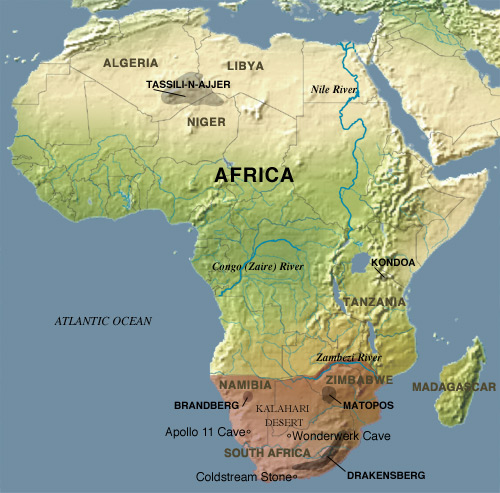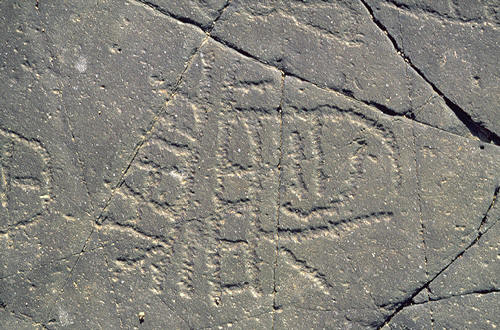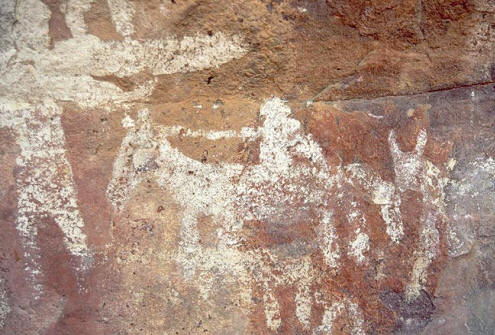
Southern african art

The shaded area, south of Zambezi River, indicates the southern zone of
African rock art. This zone stretches
from the South African Cape to the border
between Zimbabwe and Zambia formed by the Zambezi River. The rock
painting of this region is characterized by exquisitely minute detail
and complex techniques of shading. Engravings are also found in this
zone, generally on boulders and rocks in the interior plateau of
southern Africa, while paintings are found in the mountainous regions
that fringe the plateau. There are only a few places where paintings and
engravings are found in the same shelter.
Aboriginal
While the rock art of southern Africa is
different from that of the central and northern zones, it is not
homogenous. There is, for example, great diversity between the art of
the Matopo Hills in Zimbabwe, the Brandberg in Namibia, and the
Drakensberg Mountains in South Africa. Nevertheless, scholars have
suggested that a great deal of San art throughout southern Africa may be
explicitly and implicitly linked to San shamanic religion. Principally,
a great deal of San art depicts their central most important ritual, the
healing or trance dance, the complex somatic experiences of dancers, and
various metaphors, such as death, that are intimately related to this
dance.
In addition to San rock art, there are also rock paintings and engravings made by closely related Khoi pastoralists. These people acquired domestic stock through close interaction with Bantu-speaking people some 2,000 years or more ago. Although there is some evidence that they also made engravings, Bantu-speakers' rock art is characterized by finger painting in a thick, white pigment. This art is implicated in initiation rituals and in political protest.
|
|
Elands Bay Cave
Western Cape South Africa Image courtesy of Rock Art Research Institute, University of the Witwatersrand, South Africa
|
 |
Driekops Eiland
Northern Cape South Africa Image courtesy of Rock Art Research Institute, University of the Witwatersrand, South Africa RSA DRE 160
Both San and Khoi made engravings. There are
three principal engraving techniques—pecking (in which the rock
surface is hammered numerous times), incision (in which the rock
surface is cut), and scratching (in which the patina of the rock
surface is scratched, thereby exposing a new, unoxidized
surface).
|
 |
Lonyana Rock
Kwazulu-Natal South Africa Image courtesy of Rock Art Research Institute, University of the Witwatersrand, South Africa RSA LNR6
Very detailed, fine-lined San paintings are found in the
southern zone. This image is one of two known circular
depictions of the healing or trance dance, which is more
commonly depicted in a linear manner. Figures dance around a
seated figure apparently healing another reclining person
enveloped in a kaross, a short skin-cloak.
|
 |
Makgabeng Hills (detail)
Northern Province South Africa Image courtesy of the Rock Art Research Institute, University of the Witwatersrand, South Africa RSA BLA8 20 The white finger-painting tradition of Bantu-speakers is not a shamanistic art but concerns initiation and political protest. In this painting, the numerous figures represent colonial forces riding horses or shooting guns. |
http://www.metmuseum.org/toah/splash.htm